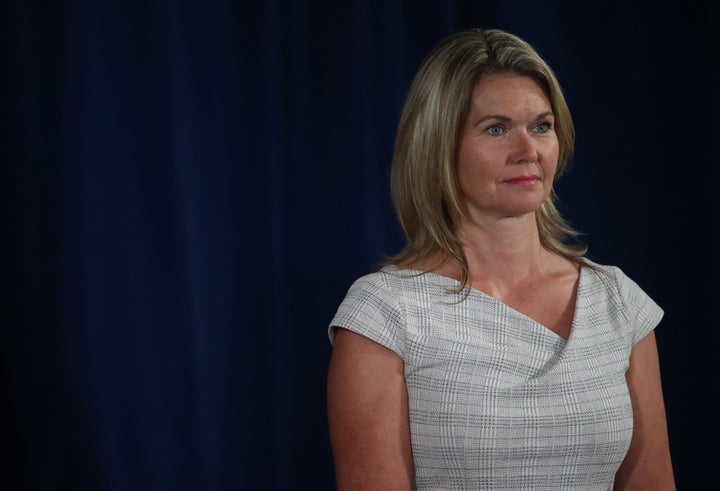
Ontario is putting an end to the use of “birth alerts,” the practice of children’s aid societies alerting a hospital if they believe a newborn baby may need protection, by October.
The province says the alerts disproportionately impact Indigenous and racialized families.
Birth alerts are not legislated in Ontario, the province said in a news release, and have been used “inconsistently” by children’s aid societies. The province’s new approach will include collaboration from families, community partners and service providers to “ensure more families stay together.”
Manitoba ended the practice of issuing birth alerts earlier this year, while British Columbia moved to ban them in September 2019.
WATCH: Provinces, money remain as barriers to new Indigenous child welfare systems. Story continues below.
Through consultations with children’s aid societies, children and foster families over the past year, “[We] just really heard from those people that we need to build a system that really focused on prevention and early intervention in keeping families together,” Jill Dunlop, Ontario’s Associate Minister of Women and Children’s Issues, told HuffPost Canada.
“We know that birth alerts do the exact opposite, so we want families to be able to be part of the conversation, the discussion, about the supports that are available to them.”
The new approach will see children’s aid societies and hospitals working together with families to create pre- and post-natal supports like birth planning services or referrals to community resources.
“When women are concerned that there may be a birth alert against them, they’re not seeking the supports that they need, the pre- and post-natal [care], the medical support, because they feared having their child removed from them,” Dunlop said. “So we want this to be a system where they have a voice in this, they are part of the plan.”
Data from the past 12 months shows that 442 children were removed from their mothers within from seven days of birth to one year, though these are not all birth alerts, Dunlop said. First Nations near Hamilton, Brantford and Thunder Bay have reported the regular use of birth alerts.
“It’s definitely a step in the right direction for children and for families ...”
- Cathy Murphy
Cathy Murphy, executive director of the Adoption Council of Canada (ACC), said the province’s new focus on early intervention and prevention will support the goal of keeping families together.
“It’s definitely a step in the right direction for children and for families, as long as there are good pre- and post-natal plan supports in place,” she told HuffPost.
In a press release, the Ontario Native Women’s Association (ONWA) said it was encouraged by the new directive.
“Indigenous women have always had the knowledge, skills and abilities to raise their families. They have an inherent right for jurisdiction over their children.”
The ONWA outlined next steps it wants to see, including investments in Indigenous women and community healing such as trauma-informed prevention services like Indigenous parenting programs.
The Ontario Association of Children’s Aid Societies said in a statement that it is committed to “collaborating with the healthcare sector to develop best practices, options, and approaches to engage and support expectant parents and families.”
Alerts can tell agencies who needs support
Jeffrey Schiffer, executive director of Native Child and Family Services of Toronto, said it’s important for the province to develop an alternate system to ensure that mothers get the support they need.
He said that for Indigenous agencies like his, birth alerts don’t result in child apprehensions; instead, they “trigger a notification that an expectant mother is in need of support.”
“That initial support, while the mother is pregnant, if she is having a hard time, can make all the difference ...”
- Jeffrey Schiffer
Schiffer’s agency, upon receiving this alert, would take steps to provide holistic support. This might include assigning a pre- or post-natal worker, or a clinical worker to provide mental health support, or substance misuse or housing support.
“That initial support, while the mother is pregnant, if she is having a hard time, can make all the difference around whether or not she ultimately stays with that child, and whether or not that child gets everything they need and all the supports they’re entitled to,” Schiffer said.
Province reviewing its child welfare system
Laura Eggertson, the ACC’s former executive director, said the move is an important step based on the historical reality of what Indigenous families face.
Thousands of Indigenous children were taken from their homes, sometimes forcibly, from the 1960s onward in Canada.
“As a parent of Indigneous children, I think it’s important that there not be an automatic birth alert that we know disproportionately affects Indigenous families, Métis families, families of colour [and] Black families,” she told HuffPost, noting that children from these families disproportionately end up in the child welfare system.
Other steps need to be taken too, Eggertson said, like supporting families before children enter care, and supporting kinship families, such as when a relative or someone known to a child takes care of them.
There needs to be an emphasis on placing children who are already in the child welfare system with a family member or someone known to them, or with a family who is culturally competent and will maintain ties to their child’s culture, Eggertson said.
The province issued a moratorium in March so that youth in Ontario couldn’t age out of care during the COVID-19 pandemic.
“We’d like to see that happen all the time and even better [and] even more importantly, find families or reunite [children] with healthy family, safe family members, before they age out of care,” Eggertson said.
The ministry said it will review its child welfare system, including the overrepresentation of Black, Indigenous and racialized youth in the system. When asked if the province is considering extending the moratorium, Dunlop said the government is continuing to move forward with modernizing the child welfare system and would have more to say in the coming weeks.